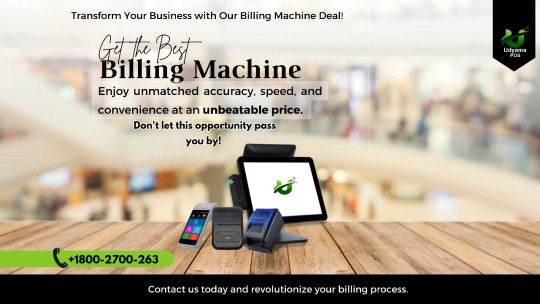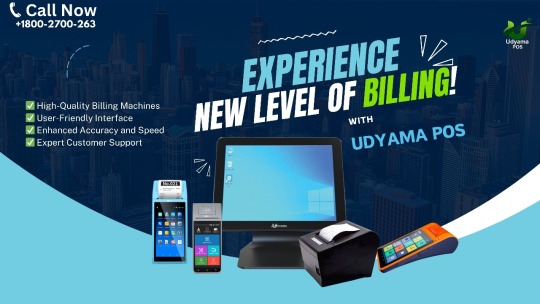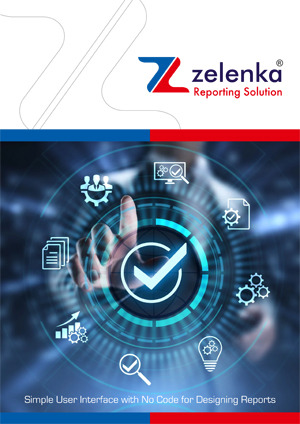#industrial automation reporting tool
Text

Industrial Alarm Management Application
#industrial reporting solution#industrial reporting software#industrial reports development company#reporting tool for industrial automation#reporting software for industrial automation#Scada reporting software#report generation in Scada#best reporting software#Scada report generation#best reporting tools#industrial automation reporting tool#reporting tool for Scada#web based reporting tools
0 notes
Text
#document approval software#document approval tool#quadric#automation#productivity app#construction safety#form builder#dynamic form builder#dynamic report builder#workflow#construction industry#workflow builder#productivity apps
0 notes
Text
I saw this and thought, that doesn’t sound like io9; I used to read that site a lot. Well:
“As you may have seen today, an AI-generated article appeared on io9,” James Whitbrook, deputy editor at io9 and Gizmodo, tweeted about the situation. “I was informed approximately 10 minutes beforehand, and no one at io9 played a part in its editing or publication.”
Whitbrook said he sent a statement to G/O Media along with “a lengthy list of corrections.” In part, his statement said, “The article published on io9 today rejects the very standards this team holds itself to on a daily basis as critics and as reporters. It is shoddily written, it is riddled with basic errors; in closing the comments section off, it denies our readers, the lifeblood of this network, the chance to publicly hold us accountable, and to call this work exactly what it is: embarrassing, unpublishable, disrespectful of both the audience and the people who work here, and a blow to our authority and integrity.”
He continued, “It is shameful that this work has been put to our audience and to our peers in the industry as a window to G/O’s future, and it is shameful that we as a team have had to spend an egregious amount of time away from our actual work to make it clear to you the unacceptable errors made in publishing this piece.”
The problem with AI isn’t that it exists as one more tool in the box for creators to use, or as a way to automate data processing. The problem is that it’s immediately being used to undercut actual workers and creators, threaten if not eliminate their jobs, and all while building this disorienting mirror universe of mediocrity where the shit people get AI to generate doesn’t even make sense.
207 notes
·
View notes
Text
The perception that social media management is a saturated and undifferentiated field is a common one, but it's not entirely accurate.
The demand for social media management continues to grow. According to Statista, the number of social media users worldwide was estimated to be around 4.26 billion in 2021 and is projected to increase to almost 6 billion by 2027. This growth signifies a continuously expanding market for social media services .

Each business has unique needs and goals, which means a one-size-fits-all approach to social media management doesn’t work. A 2023 survey by HubSpot found that 90% of marketers using social media saw increased exposure for their business, and 75% reported increased traffic. These statistics highlight the importance of tailored strategies that align with specific business objectives, something AI alone cannot fully achieve .

AI tools are excellent for automating repetitive tasks, analyzing large data sets, and optimizing posting times. However, they lack the human touch required for crafting engaging content, understanding nuanced brand voice, and creating authentic interactions. A McKinsey report highlighted that while AI can increase efficiency, human creativity and emotional intelligence are irreplaceable in areas like content creation and community management .
Effective social media management is not just about posting content; it’s about understanding data, developing strategies, and continuously refining approaches based on analytics. According to Hootsuite's Social Media Trends 2023 report, businesses that leverage data insights to inform their social media strategy see a 30% increase in efficiency and 25% increase in effectiveness . This level of strategic analysis requires expertise that goes beyond basic AI capabilities.
Successful social media management is about building and maintaining authentic relationships with an audience. A Sprout Social study found that 86% of consumers prefer brands that are authentic and 81% say that trust in brands is a deciding factor in their purchase decisions . Human social media managers excel at fostering these relationships through personalized interactions and empathetic communication, something AI cannot replicate.

Social media management firms can differentiate themselves by specializing in niches or industries, offering unique value propositions, or focusing on innovative services such as influencer marketing, content creation, and brand storytelling. Specialization allows for deeper industry knowledge, more relevant content, and better results for clients.
While AI and an increasing number of practitioners have undoubtedly transformed social media management, the field remains far from saturated. The growth in social media usage, the need for customized strategies, the complementarity of AI and human creativity, and the importance of authentic relationships all underscore the continuing demand for skilled social media managers. Far from being obsolete, the role of a social media manager is evolving, integrating new tools and technologies to deliver even greater value to clients.
Follow us on :
Searching for job shadowing experience?
Reach us at @[email protected]
2 notes
·
View notes
Text
Navigating the Landscape of Tax Preparation and Bookkeeping Services- A Guide to Choosing the Best Agencies
Tax preparation and bookkeeping are integral parts of running a successful business. However, for many entrepreneurs and business owners, these tasks can be daunting and time-consuming. That's where professional services come in handy. In cities like Perth, Brisbane, Sydney, Melbourne, Adelaide, and NSW, agencies like Account Cloud offer comprehensive tax preparation and bookkeeping services to alleviate the burden on businesses. But with so many options available, how do you choose the best agency for your needs? Here's a guide to help you navigate the landscape:
1. Assess Your Needs: Before you start your search for a tax preparation and bookkeeping service agency, it's essential to assess your needs. Determine the scope of services you require, such as tax filing, payroll processing, financial reporting, or general bookkeeping. Understanding your requirements will help you narrow down your options and find agencies that specialize in the services you need.
2. Experience and Expertise: When entrusting your financial matters to a third-party agency, it's crucial to ensure they have the necessary experience and expertise. Look for agencies with a proven track record in tax preparation and bookkeeping services. Consider factors such as the number of years in business, client testimonials, and the qualifications of their team members.

3. Industry Specialization: Different industries have unique tax and accounting requirements. Whether you're in retail, hospitality, healthcare, or any other sector, consider choosing an agency that specializes in serving businesses similar to yours. Industry-specific knowledge can ensure compliance with relevant regulations and optimize tax strategies tailored to your business.
4. Technology and Innovation: The accounting landscape is continually evolving, with advancements in technology reshaping how financial tasks are performed. Seek out agencies that embrace technology and leverage innovative solutions to streamline processes and enhance accuracy. Cloud-based accounting platforms, automation tools, and data analytics can significantly improve efficiency and decision-making.
5. Communication and Accessibility: Effective communication is key to a successful partnership with a tax preparation and bookkeeping agency. Choose an agency that prioritizes clear and transparent communication, keeping you informed about your financial status and any regulatory changes that may affect your business. Additionally, consider their accessibility and responsiveness to inquiries or concerns.
6. Compliance and Security: Compliance with tax laws and regulations is non-negotiable when it comes to financial matters. Ensure that the agency you choose adheres to the highest standards of compliance and stays updated with the latest regulatory changes. Moreover, prioritize security measures to protect sensitive financial information against unauthorized access or data breaches.
7. Scalability and Flexibility: As your business grows, your accounting needs may evolve as well. Select a tax preparation and bookkeeping agency that can scale its services according to your business growth. Whether you're a small startup or a large enterprise, flexibility in service offerings and pricing structures ensures that you receive tailored solutions aligned with your current and future needs.
8. Cost and Value: While cost is undoubtedly a factor in the decision-making process, it's essential to consider the value proposition offered by the agency. Instead of solely focusing on the lowest price, evaluate the services, expertise, and support provided in relation to the cost. A higher upfront investment in quality services can often yield long-term benefits and cost savings through improved financial management.
Choosing the best tax preparation and bookkeeping services agency requires careful consideration of various factors, including your specific needs, the agency's experience and expertise, industry specialization, technology adoption, communication practices, compliance standards, scalability, and cost-effectiveness. By conducting thorough research and due diligence, you can find a trusted partner like Account Cloud to handle your financial affairs efficiently, allowing you to focus on growing your business with peace of mind.
#Bookkeeping Services Melbourne#Bookkeeping Services Brisbane#Bookkeeping Services Perth#Perth Bookkeeping Services#Adelaide Bookkeeping Services#Online Bookkeeping and Accounting Perth#Online Bookkeeping Services Melbourne#Small Business Bookkeeping Services Brisbane#Small Business Bookkeeping Services Sydney#Small Business Bookkeeping Services Perth#Small Business Bookkeeping Services NSW#Premier Tax and Bookkeeping Adelaide#Tax and Accounting Services Brisbane#Tax and Accounting Services Sydney#Tax and Accounting Services Perth#Personal Tax Accountant Brisbane
2 notes
·
View notes
Text
Top 5 Digital Marketing in 2024

Some powerful tools are widely used in digital marketing. These are the most important tools in digital marketing and if you know or want to learn more check out this.
Google Analytics: A web analytics service offered by Google that tracks and reports website traffic. It provides valuable insights into website performance, user behaviour, and audience demographics.
Google Search Console: Formerly known as Google Webmaster Tools, it's a free service provided by Google that helps webmasters monitor, maintain, and troubleshoot their site's presence in Google Search results. It provides data about search performance, index coverage, and more.
Mailchimp: An email marketing platform that allows users to design, send, and analyse email campaigns. It offers features such as email templates, audience segmentation, automation, and detailed analytics.
SEMrush: A comprehensive SEO tool that offers features for keyword research, backlink analysis, rank tracking, site auditing, and more. It helps businesses improve their online visibility and outrank competitors in search engine results.
Google Ads (formerly Google AdWords): Google's advertising platform that allows businesses to create and manage pay-per-click (PPC) advertising campaigns. It enables advertisers to display ads on Google's search engine results pages (SERPs), YouTube, and partner websites within the Google Display Network.
These tools collectively cover a wide range of digital marketing needs, from website analytics and SEO to email marketing and online advertising. However, it's worth noting that the effectiveness of these tools can vary depending on factors such as your specific goals, target audience, and industry. Additionally, there are many other digital marketing tools available that cater to different aspects of online marketing, so it's essential to explore and experiment to find the ones that best suit your requirements and learn more.
2 notes
·
View notes
Text
Ultimate Guide to Real Estate Lead Generation: Digital Pleasure World
Real Estate Lead Generation: In the fast-paced world of real estate, the quest for quality leads is akin to finding a gem in a sea of stones. In this comprehensive guide, we'll delve into the realm of digital marketing and unveil a treasure trove of strategies to help you unlock the door to success in lead generation. Whether you're a seasoned agent or just dipping your toes into the market, these actionable tips will pave the way for your journey towards real estate prosperity.
Chapter 1: Crafting Your Digital Presence
Your online presence is your digital storefront, beckoning potential clients to step inside and explore the world of real estate. In this chapter, we'll discuss the foundational elements of establishing a captivating digital presence.
Building a Stunning Website: Your website serves as the cornerstone of your online presence. Invest in a sleek and user-friendly design that showcases your listings, services, and expertise.
Mastering the Art of SEO: Unlock the power of search engine optimization (SEO) to ensure your website ranks high in search engine results. Conduct keyword research, optimize meta tags, and create compelling content to attract organic traffic.
Embracing Content Marketing: Content is king in the digital realm. Create engaging blog posts, videos, and infographics that educate and inspire your audience. Share valuable insights, market trends, and neighborhood highlights to establish yourself as a trusted authority in the industry.

Chapter 2: Social Media Mastery
In the age of social media, cultivating a strong presence on popular platforms is essential for connecting with potential clients and nurturing leads. Let's explore how you can leverage the power of social media to elevate your real estate game.
Harnessing the Power of Facebook: With over 2 billion monthly active users, Facebook is a goldmine for real estate professionals. Create compelling posts, share captivating visuals, and engage with your audience to cultivate meaningful relationships.
Instagram: The Visual Showcase: As a visual-centric platform, Instagram offers the perfect canvas to showcase stunning property photos and videos. Use hashtags, stories, and reels to attract attention and drive engagement.
LinkedIn: The Professional Network: Position yourself as a thought leader in the real estate industry by sharing valuable insights and networking with fellow professionals on LinkedIn. Join industry groups, participate in discussions, and publish articles to expand your reach.
Chapter 3: Email Marketing Excellence
Email marketing remains one of the most effective tools in a real estate agent's arsenal for nurturing leads and staying top-of-mind with clients. Let's uncover the secrets to crafting compelling email campaigns that drive results.
Building Your Email List: Start by building a robust email list of potential clients and leads. Offer valuable incentives such as free market reports or exclusive listings to entice visitors to subscribe to your newsletter.
Segmentation and Personalization: Tailor your email campaigns to specific segments of your audience based on their interests, preferences, and buying behavior. Personalize your messages to make each recipient feel valued and understood.
Automation and Drip Campaigns: Streamline your email marketing efforts with automation tools that allow you to send targeted messages at the right time. Set up drip campaigns to nurture leads through each stage of the buying or selling process.
Chapter 4: Paid Advertising Strategies
In a competitive market, paid advertising can give you the edge you need to stand out from the crowd and reach your target audience with precision. Let's explore the world of paid advertising and discover how you can maximize your ROI.
Google Ads: The Gateway to Success: Dominate the search engine results page with Google Ads campaigns that target keywords relevant to your niche. Craft compelling ad copy, optimize your landing pages, and track your conversions to measure your success.
Facebook and Instagram Ads: Leverage the powerful targeting options available on Facebook and Instagram to reach potential clients based on demographics, interests, and behaviors. Experiment with different ad formats such as carousel ads, video ads, and lead generation ads to find what works best for your audience.
Retargeting Campaigns: Keep your brand top-of-mind with retargeting campaigns that display ads to users who have previously visited your website or engaged with your content. Use dynamic retargeting to show personalized ads featuring specific properties or listings that match their interests.
Chapter 5: The Human Touch: Networking and Relationship Building
In an industry built on trust and personal connections, never underestimate the power of good old-fashioned networking. Let's explore how you can cultivate meaningful relationships with clients, colleagues, and industry influencers to fuel your success.
Joining Professional Associations: Get involved in local real estate associations and networking groups to expand your professional network and stay informed about industry trends and developments.
Hosting Events and Workshops: Organize educational events, workshops, or webinars to provide value to your audience and establish yourself as a knowledgeable expert in your field. Use these opportunities to forge new connections and nurture existing relationships.
Building Strategic Partnerships: Collaborate with complementary businesses such as mortgage brokers, home inspectors, and interior designers to offer additional value to your clients and expand your referral network. Establish mutually beneficial partnerships that help you reach new audiences and generate more leads.
Chapter 6: Tracking Your Success and Iterating for Improvement
In the ever-evolving landscape of digital marketing, success is not a destination but a journey of continuous improvement. Let's discuss how you can track your progress, analyze your results, and iterate your strategies for maximum impact.
Setting Measurable Goals: Define clear, measurable goals for your lead generation efforts, whether it's increasing website traffic, growing your email list, or closing more deals. Establish key performance indicators (KPIs) to track your progress and evaluate your success.
Analyzing Your Data: Use analytics tools such as Google Analytics, Facebook Insights, and email marketing platforms to gather data about your audience, engagement metrics, and conversion rates. Analyze this data to identify patterns, trends, and areas for improvement.
Experimenting and Testing: Don't be afraid to experiment with new strategies, tactics, and channels to see what resonates with your audience. A/B test your email subject lines, ad creatives, and landing page designs to optimize your performance and drive better results.
Staying Agile and Adaptable: In the fast-paced world of digital marketing, flexibility is key to staying ahead of the curve. Stay informed about industry trends, algorithm changes, and emerging technologies, and be prepared to adapt your strategies accordingly.
Conclusion
Congratulations! You've reached the end of our journey through the world of real estate lead generation. Armed with the knowledge and strategies outlined in this guide, you're well-equipped to navigate the digital landscape and unlock the door to success in your real estate endeavors. Remember, Rome wasn't built in a day, and neither is a thriving real estate business. Stay persistent, stay innovative, and above all, stay true to your passion for helping clients find their dream homes. Here's to your continued success in the exciting world of real estate!
2 notes
·
View notes
Text
Improving Client Relationships Using CRM in Forex Brokerage

The key to success in the cutthroat world of Forex trading is building and maintaining customer connections. The tools and technologies that enable effective client management change along with the industry. Customer Relationship Management (CRM) software is one such product that has grown to be essential for Forex brokerages.
A Good CRM system is the cornerstone of every profitable Forex brokerage, serving as the primary interface for managing customer relations and optimizing corporate operations as a whole. Choosing the Best CRM solution is essential due to the growing need for efficient operations and tailored services.
Forex brokerages need CRM systems that are not only reasonably priced but also have special features designed to meet their requirements. Presenting ForexCRM, the best CRM solution in the business, which gives brokerages access to cutting-edge features at a reasonable price.

Thanks to ForexCRM and other affordable CRM solutions, brokerages may now affordably manage client interactions with the resources they need. Brokerages of all sizes can make use of CRM's scalable features and features to maximize customer engagement and retention.
ForexCRM's extensive feature set, created especially for Forex brokerages, is what makes it unique. With features like integrated trading platforms, Contest Management, smooth onboarding procedures, sophisticated analytics, Social Trading, and Liquidity Feeds, ForexCRM provides a comprehensive answer to satisfy the many demands of contemporary brokerages.

Brokerages may automate tedious operations, optimize communication channels, and obtain insightful data about customer behavior and preferences by utilizing ForexCRM. Brokerages may expand their company, provide individualized services, and cultivate enduring loyalty by centralizing client data and interactions.
ForexCRM provides customized solutions to simplify complex processes, making it an asset for New brokerage Formation, licensing, and regulatory compliance initiatives. With features like compliance checklists and customizable onboarding workflows, ForexCRM streamlines the registration and licensing process and guarantees prompt approvals.

Brokerages may effortlessly manage regulatory compliance while reducing risk thanks to specialized modules for KYC and AML compliance. Furthermore, ForexCRM makes regulatory reporting system connection easier, allowing for accurate submissions and providing transparency to authorities. All things considered, ForexCRM gives brokerages the confidence they need to successfully negotiate regulatory difficulties, which helps them succeed in the cutthroat Forex business.
In summary, CRM is essential to improving client connections in the Forex brokerage sector. Brokerages can stay ahead of the curve by offering great customer experiences and retaining a competitive edge in the industry with feature-rich and reasonably priced systems like ForexCRM. Unlock the full potential of client relationship management for your Forex brokerage by selecting the finest CRM available.
3 notes
·
View notes
Text
Best Billing Machines in India
Effectiveness in transactions is essential in the busy realms of commerce and retail. Billing machines, a crucial tool in this process, have advanced significantly over time, with UDYAMA POS setting the standard in India. This article highlights UDYAMA POS's ground-breaking position in the industry while examining the innovations, customer satisfaction, and variety of (Best Billing Machines in India) that are supplied. (Best Billing Machines in Delhi) are essential for streamlining billing processes because they provide cutting-edge functionality catered to various corporate requirements. The choice of billing machines can have a big impact on revenue creation and productivity for businesses of all sizes, from small merchants to multinational corporations.

Considering the Value of Billing Equipment
Competent billing is the foundation of any flourishing company. For any type of business—retail, dining, or service—accurate and timely invoicing is essential to preserving both the company's finances and its reputation with clients. This procedure is automated using billing machines, which streamlines transactions and lowers the possibility of errors. Contemporary billing machines enable organizations to improve operational efficiency and concentrate on their core competencies by providing functions such as inventory management, sales analysis, and tax calculation.
Essential Factors to Take-into-Account:
Creative Software for Billing:
Linked billing software is the cornerstone of modern billing systems. Look for systems with powerful reporting features, user-friendly interfaces, and customizable invoice templates. These features simplify the process of creating invoices and provide useful information on sales patterns and inventory management.
Choices for Internet Access:
In today's networked environment, billing machines with several connectivity options are more versatile and easy. Bluetooth and Wi-Fi enabled devices facilitate seamless communication with other corporate systems, allowing for real-time data synchronization and remote management.
Reliable Payment Processing:
Security is essential while processing financial transactions. Choose billing machines with robust encryption features and PCI-compliant payment processing services installed. This ensures the confidentiality and integrity of client data while lowering the risk of fraud and data breaches.
Design compactness and portability:
Small, portable billing devices are ideal for businesses with limited space or that are mobile. Look for portable devices with long-lasting batteries and sturdy construction. This simplifies invoicing in a number of contexts, including shop counters and outdoor events.
Possibility of Development and Enhancement:
Invest in scalable and easily upgraded invoicing solutions to accommodate future business growth and changing needs. Modular systems with interchangeable parts facilitate the easy integration of additional features as your business expands.
UDYAMA Point of Sale Advantages
The Indian billing machine market has seen a radical transformation thanks to UDYAMA POS's state-of-the-art technology and customer-focused mentality. A selection of models designed to satisfy particular business needs are available from UDYAMA POS. These approaches have improved the checkout experience for customers while also increasing operational efficiency.
There are many different types of billing machines available on the market, ranging from sturdy desktop models for high-volume organizations to portable devices for transactions while on the go. Every kind has distinctive qualities designed for particular commercial settings, which emphasizes how crucial it is to choose a machine that fits your operational requirements.
Features of a Billing System to Take-into-Account
Durability, connectivity choices, and convenience of use are important factors to take-into-account when selecting a billing machine. A machine that performs well in these categories can significantly improve business operations by facilitating faster and more dependable transactions.
(Best UDYAMA POS Billing Machine) Models
A range of models that are notable for their cost, dependability, and functionality are available from UDYAMA POS. With the help of this section's thorough analysis of these best models, you can make an informed choice depending on your unique business needs.
How to Choose the Right Invoicing Equipment
When choosing a billing machine, it's important to evaluate your company's needs, budget, and the features that are most important to your daily operations. This guide provides helpful guidance to assist you in navigating these factors.
Benefits of Changing to a Modern Billing System
Modern billing systems, such as those provided by UDYAMA POS, can greatly improve customer satisfaction and efficiency. The several advantages of performing such an upgrade are examined in this section, ranging from enhanced client satisfaction to streamlined operations.
Advice on Installation and Upkeep
Making sure your billing machine is installed correctly and receiving routine maintenance is essential to its longevity and dependability. Important setup and maintenance advice for your new gadget is included in this section.
Field Research: UDYAMA POS Success Stories
The revolutionary effect of UDYAMA POS billing devices on businesses is demonstrated by actual success stories from the retail and hospitality industries. These case studies demonstrate how businesses have benefited from increased customer satisfaction and operational efficiency thanks to UDYAMA POS technology.

All products in the Billing Machine are:
(Handy POS Billing Machine)
(Android POS Billing Machine)
(Windows POS billing Machine)
(Thermal Printer Machine)
(Label Printer Machine)
Enhancing Efficiency with Best Billing Machines in India:
The adoption of the (best billing machines in Noida) has revolutionized the way businesses manage their finances. These advanced solutions offer a myriad of benefits, including:
Simplified Billing Procedures: By automating invoice generation and payment retrieval, billing procedures are made more efficient and less prone to human error and delay.
Enhanced Accuracy: Up-to-date billing software guarantees precise computations, removing inconsistencies and billing conflicts.
Improved Customer Experience: Easy and quick transactions increase client happiness and loyalty and encourage recurring business.
Real-Time Insights: Rich reporting tools offer insightful information on inventory control and sales performance, facilitating well-informed decision-making.
Observance of Regulatory Mandates: Pre-installed compliance tools guarantee that financial reporting requirements and tax laws are followed, lowering the possibility of fines and audits.
Frequently Asked Questions:
Are billing systems appropriate for all kinds of companies?
Absolutely! Billing machines come in various configurations and are tailored to suit the needs of diverse businesses, from small retailers to large enterprises.
Can billing devices accept several forms of payment?
Yes, most modern billing machines support multiple payment options, including cash, credit/debit cards, mobile wallets, and online payments.
How frequently should the software on billing machines be updated?
It's recommended to update billing machine software regularly to ensure optimal performance, security, and compatibility with the latest regulations and technologies.
Do billing machines need to be connected to the internet?
While internet connectivity is not mandatory for basic billing operations, it may be necessary for accessing cloud-based features, software updates, and remote management capabilities.
Is it possible to link accounting software with billing machines?
Yes, many billing machines offer integration with popular accounting software packages, facilitating seamless data transfer and reconciliation.
Are POS terminals easy to use?
Most billing machines are designed with ease of use in mind, featuring intuitive interfaces and straightforward setup processes. Training and support are typically provided to ensure smooth adoption and operation.
UDYA MA POS, a business renowned for its wide range of products, innovative solutions, and happy clients, is the result of searching for the (best billing machines in India). Considering how organizations are always changing, choosing the right billing system is essential. Thanks to its commitment to quality and innovation, UDYAMA POS is a leader in the billing machine industry, ensuring that transactions will become more streamlined, dependable, and fast in the future. The strategic decision to invest in the (top billing machines in Gurgaon) could have a significant effect on businesses of all kinds. These innovative solutions help organizations thrive in the present competitive market by streamlining billing processes, increasing precision, and providing insightful data.
Regardless of the size of your business, selecting the correct billing equipment is critical to increasing productivity and spurring expansion.
Visit the website for more information: www.udyamapos.com
2 notes
·
View notes
Text
Unravelling Audit Trends: A Guide for Accountants and Auditors in Dubai
Welcome, accountants and auditors in Dubai, to an insightful exploration of the latest audit trends shaping our vibrant industry landscape. In this guide, we'll delve into key trends, technological advancements, regulatory shifts, and best practices that are essential for your success in Dubai's dynamic financial sector.
Regulatory Updates: Stay ahead of the game by keeping abreast of the latest regulatory changes in Dubai. From updates in financial reporting standards to compliance requirements, understanding and adapting to these changes is crucial for ensuring accurate and compliant audits.
Technology Integration: Embrace the power of technology to enhance your audit processes. AI-driven analytics, cloud-based platforms, and automation tools can streamline auditing tasks, improve accuracy, and provide deeper insights into financial data, ultimately saving time and resources.
Best Practices: Elevate your audit game with best practices focused on risk assessment, internal control evaluation, and fraud detection. Proactive measures and robust strategies in these areas can strengthen audit outcomes, instill client trust, and mitigate risks effectively.
Sustainability Reporting: With sustainability gaining prominence, auditors in Dubai play a pivotal role in verifying and enhancing the credibility of sustainability reports. Incorporating ESG factors into audits is becoming increasingly important, reflecting the growing emphasis on corporate responsibility.
Blockchain Revolution: Explore the potential of blockchain technology in auditing. Its features such as enhanced data security, transparency, and immutability are transforming audit trails and ensuring the integrity of financial information, offering auditors innovative solutions to improve audit efficiency and reliability.
Future Outlook: The future of auditing in Dubai is promising for those who embrace change and innovation. Continuous learning, upskilling in technology, and maintaining compliance with evolving standards will be key drivers of success in the ever-evolving audit landscape.
By staying informed, leveraging technology, adopting best practices, and embracing innovation, accountants and auditors in Dubai can navigate through challenges, deliver value-added services, and drive excellence in auditing practices, cementing their position as trusted financial advisors in the region.
#DubaiAuditors#AuditTrends#AccountantsInDubai#RegulatoryChanges#TechIntegration#BestAuditPractices#SustainabilityReporting#BlockchainAuditing#FutureOfAuditing#FinancialCompliance#ESGStandards#AuditInnovation#AuditTech#DubaiFinance#AuditInsights#dubaibusiness#business strategy#uaebusiness
2 notes
·
View notes
Text
Deciding Between Selenium with Python and Selenium with Java: An In-Depth Comparison
In the domain of automated testing, Selenium emerges as a pivotal tool for ensuring the reliability and quality of web applications. When it comes to selecting the programming language to harness Selenium's capabilities, two prominent contenders often come into play: Python and Java. Both languages offer distinct advantages and considerations, making the decision between them crucial for any automation project.

In this blog post, we'll conduct a thorough comparison of Selenium with Python and Selenium with Java, exploring their unique strengths, use cases, and factors to consider. By the end, readers will have a clearer understanding of which option aligns best with their project requirements, team proficiencies, and organizational objectives.
Python with Selenium:
Python, celebrated for its simplicity and readability, has garnered significant traction within the automation testing community. Let's delve into some key benefits of leveraging Python with Selenium:
Simplicity and Readability: Python's hallmark characteristics include simplicity and readability. Its concise syntax enables developers to express ideas in fewer lines of code, resulting in scripts that are easier to comprehend and maintain. For testers, this translates to expedited development cycles and reduced overhead in managing test suites.
Extensive Ecosystem: Python boasts a vast ecosystem of libraries and frameworks that complement Selenium, augmenting its capabilities for test automation. Whether handling data manipulation, conducting API testing, or generating test reports, Python's rich library support caters to diverse automation needs. Furthermore, the active Python community ensures an abundance of resources, tutorials, and documentation to aid testers throughout the automation journey.
Rapid Prototyping: Python's dynamic nature lends itself well to rapid prototyping and iterative development. Testers can swiftly experiment with different approaches, adapt scripts on-the-go, and respond promptly to evolving requirements. This flexibility seamlessly aligns with agile development methodologies, empowering teams to deliver high-quality software with agility.
Integration Compatibility: Python's interoperability with other tools and technologies makes it an appealing choice for Selenium automation. Whether integrating with continuous integration (CI) pipelines, test reporting frameworks, or version control systems, Python's versatility ensures smooth interoperability, streamlining the testing workflow and bolstering overall efficiency.

Java with Selenium:
Java, renowned for its robustness and performance, has long been a cornerstone in enterprise software development. Here are some compelling reasons to consider Java for Selenium automation:
Robustness and Performance: Java's static typing and strong object-oriented principles contribute to the robustness and performance of Selenium test suites. Its compile-time error checking aids in identifying potential issues early in the development phase, resulting in more stable and reliable automation scripts. For large-scale enterprise projects with stringent quality requirements, Java's reliability is a significant asset.
Widespread Adoption: Java enjoys widespread adoption within the enterprise landscape, making it a natural choice for organizations with existing Java codebases or a Java-centric development environment. The abundance of Java expertise in the workforce, coupled with extensive community support and industry recognition, solidifies its status as a preferred language for Selenium automation in many corporate settings.
Mature Tooling: Java's mature ecosystem of testing tools and frameworks, including JUnit and TestNG, seamlessly integrate with Selenium to offer comprehensive test automation solutions. These frameworks furnish advanced features such as parameterized testing, parallel execution, and built-in reporting capabilities, empowering testers to design and execute sophisticated test suites effortlessly.
Enterprise Support: Java's popularity in enterprise environments translates to robust support from vendors, extensive documentation, and a plethora of third-party integrations. For organizations seeking enterprise-grade features, reliability, and scalability in their Selenium automation endeavors, Java's ecosystem and support infrastructure present a compelling value proposition.
Conclusion:
In summary, both Selenium with Python and Selenium with Java present compelling options for test automation, each with its unique strengths and considerations. Python excels in simplicity, rapid development, and a vast ecosystem, making it an ideal choice for agile teams and projects with evolving requirements. Conversely, Java offers robustness, performance, and widespread enterprise support, rendering it well-suited for large-scale enterprise applications with stringent quality standards.
Ultimately, the decision between Python and Java for Selenium automation hinges on various factors such as project prerequisites, team proficiencies, and organizational preferences. By meticulously evaluating these factors and weighing the pros and cons of each option, stakeholders can make informed decisions that align with their specific needs and aspirations. Whether opting for the simplicity of Python or the robustness of Java, Selenium remains an indispensable tool for driving quality and efficiency in web application testing.
2 notes
·
View notes
Text

Industrial Alarm Management Application
#industrial reporting solution#industrial reporting software#industrial reports development company#reporting tool for industrial automation#reporting software for industrial automation#Scada reporting software#report generation in Scada#best reporting software#Scada report generation#best reporting tools#industrial automation reporting tool#reporting tool for Scada#web based reporting tools
0 notes
Text
Understanding POS Systems: An In-depth Overview
ON THIS PAGE:
What is a POS System?
Functions of a POS System
Advantages of a POS System
The complexity of the POS system
Types of POS Hardware and Software
If you manage a business, you have likely interacted with a Point of Sale (POS) system. POS systems are a critical tool for businesses all over the world, from small, independent shops to large, multinational corporations. But what is a POS system? And why are they so crucial to modern commerce? Let's dive into it.
What is a POS System?
A POS, or Point of Sale system, can be defined as a comprehensive information system specifically designed to instantly capture and relay retail details (like product name, price per unit, quantity sold, date and time of sale, location of sale, buying customer, etc.) during a transaction via automated reading tools such as cash registers. This information is subsequently distributed through communication channels and computer systems to relevant departments for in-depth analysis and implementation, with the main objective being to enhance operational efficiency.
Despite its traditional association with retail, wholesales, and the hospitality sector, POS systems have extended their reach into diverse industries. These include goods and property leasing, equipment repair services, healthcare administration, ticketing offices like cinemas and sports facilities, along with various other sectors where processing monetary transactions, resource scheduling and allocation, tracking service histories and debts, and invoicing are vital functions.
Historically, a shop's POS would encompass a bulky cash register and a ledger for recording buying and selling activities. However, in today's era, we have advanced to more compact, lightweight, and convenient options that automate a wide array of functions ranging from the rudimentary customer transactions to intricate inventory handling.
Six Functions of a POS System
POS systems are among the most intricate software systems, given the various functionalities required by different users. While the specific features vary, six basic functions are universally applicable.
1. Payment Processing: The primary purpose of a POS system is to facilitate transactions, which is why payment functions come to mind first when POS systems are mentioned. These systems can accommodate diverse payment methods including cash, check, debit and credit cards. For physical stores, POS systems can be equipped with traditional magnetic-stripe card readers, upgraded to chip-based card readers for enhanced security, or even include near-field communication (NFC) readers for mobile payment applications like Apple Pay and Google Pay.
2. Transaction management: Efficient transaction management is crucial for an effective POS system, encompassing aspects like a manageable inventory database, receipt issuing, and customer tipping. The POS interface enables employees to quickly fulfill orders during checkout. It should also provide the option of printing or emailing receipts based on customer preferences, and for service-based businesses, offer customers an option to tip.
3. Sales reporting: POS systems act as a key instrument in assessing business performance. These systems can track vital business metrics, providing reports that evaluate financial status and guide business decisions. Utilizing sales data, businesses can streamline operations and plot sustainable routes to profitability.
4. Inventory management: POS systems offer inventory management functionalities, recording real-time updates on purchases, sales, and stock levels. Businesses can use it for inventory checks, restock alerts, and other tasks to prevent overstocking or shortages. The system can also generate valuable reports, assisting merchants in devising effective purchasing and sales strategies.
5. Customer Relationship Management (CRM): Efficient customer management enhances brand loyalty. By recording customer data, POS systems facilitate more personalized customer interactions, reward repeat customers with discounts or loyalty programs, and even allow direct communication via promotional emails, provided the customers opt for it.
6. Employee management: POS systems simplify employee management with automated reporting. Digital check-in and check-out using swipe cards or codes provide precise tracking of hours worked. For commission-based roles, the system can assist in identifying high-performing employees.
Advantages of a POS System
Implementing a POS system in your business comes with several advantages.
- Efficiency: A POS system streamlines business operations, reducing the risk of human error, and thereby saving time.
- Sales Tracking: POS systems make it easy to track sales, providing real-time reports that offer insight into business performance.
- Improved Inventory Management: With a POS system, you can keep accurate, real-time inventory counts and get notified when stock runs low.
The Complexity of the POS System
The intricacy of POS systems arises from the diverse needs and expectations across different industries. Each sector presents specific requirements, particularly when it comes to reporting functions. This complexity is notably evident in the retail/wholesale sector, where businesses necessitate varied features. For example, companies dealing with perishable goods require a system capable of alerting about expiration dates. Retail businesses may demand a credit storage feature for recurring customers, whereas others might need their POS system to double as an all-encompassing inventory management system, providing FIFO (First In First Out) and LIFO (Last In First Out) inventories for accounting and taxation purposes.
The hospitality industry brings forth a distinct set of POS requirements. Restaurants look for features like adaptable item buttons, numerous discount options, service charges, receipt holding, queuing, table services, takeaways, receipt merging and splitting. However, these might not suffice for a spa or a slimming center, which may need an added scheduling window with past customer attendance records and their specific needs.
Hence, a POS system can vary significantly in its usability across diverse business processes. Often, generic, ready-made POS systems fall short in meeting these varied needs, necessitating tailored functionality. This attribute contributes to the overall complexity of POS systems.
Types of POS Hardware and software
POS systems, though sometimes solely software-based for online operations, often require hardware components. Here are a few common components of POS hardware:
1. Readers for Credit and Debit Cards
2. POS Terminals
3. Customer Facing Displays
4. Displays for Kitchen Use
5. Cash Drawers
On the software side, POS systems are categorized into two main types:
1. On-premises POS Software: Often referred to as a legacy system, this software is restricted to the individual POS terminal where it's installed. Its primary role is processing payments, recording sales and labor data, and ideally, synchronizing with accounting software. This option is generally suitable for small businesses primarily focusing on in-store sales with a single POS terminal.
2. Cloud-based POS Software: Syncing information across multiple POS terminals, this software typically offers access through mobile devices and desktops. Known for their flexibility, these systems are more suited to online businesses, mobile businesses, or those with multiple terminals or locations.
Each option has its pros and cons. While many may argue that cloud-based POS systems hold an edge over on-premises ones, businesses need to take into account factors like budget and data security. While cloud systems offer flexibility, data security remains paramount for businesses of any size.
You must choose a POS system best suited to your industry, business size, and specific requirements. For example, for a China-based cash register hardware factory such as ours, we offer high-performance cash registers and smart POS terminals designed to enhance work efficiency, reduce error rates, and streamline any business's inventory management processes.If you are interested in our product, please feel free to contact us. We are always here for you!
Website: https://www.pay-device.com/
Alibaba: https://paydevice.en.alibaba.com/
Now that you understand the essence of POS systems - their functions, advantages, complexities, and types - you are well-equipped to choose the best POS system for your business. Remember, the right POS system can be a game-changer for your business's overall operations and success.
2 notes
·
View notes
Text
Salon Management Software: The Key to Streamlining Your Salon Business
Salon management software has emerged as a game-changer, revolutionizing the way salons operate. This blog will delve into the essentials of salon management and explore the transformative role of salon POS software in streamlining business operations.

I. Understanding Salon Management:
Salon management involves overseeing the various aspects of a salon business, from appointment scheduling and inventory management to employee scheduling and customer relationship management. The goal is to create a seamless experience for both clients and salon staff.
II. The Importance of Salon Management Software:
Appointment Scheduling:
Efficiently manage appointments, reduce no-shows, and optimize staff schedules with the help of salon management software. Clients can book appointments online, and staff can access real-time schedules, enhancing overall workflow.
Inventory Management:
Keep track of products, manage stock levels, and streamline the ordering process. Salon management software helps avoid product shortages, reducing the risk of missed sales opportunities.
Customer Relationship Management (CRM):
Build lasting relationships with clients by utilizing CRM features. Personalized client profiles, appointment history, and automated reminders contribute to enhanced customer satisfaction and loyalty.
III. Salon POS Software: A Closer Look:
What is Salon POS Software?
Salon POS software, or Point of Sale software, is a specialized system designed to handle transactions and streamline the sales process in a salon. It combines the functionality of a cash register with advanced features tailored to the unique needs of the beauty industry.
Key Features of Salon POS Software:
Transaction Processing:
Facilitate quick and secure transactions, including cash, credit cards, and digital payments, providing convenience for both clients and staff.
Inventory Integration:
Seamlessly integrate with salon management software to ensure real-time updates on product availability and sales data.
Appointment Management:
Sync with the appointment scheduling system to unify the booking and payment processes, reducing wait times and enhancing the overall client experience.
Reporting and Analytics:
Generate comprehensive reports on sales, popular services, and inventory turnover, enabling informed decision-making for business growth.
IV. How Salon POS Software Streamlines Your Business:
Efficient Transactions:
Salon POS software speeds up the checkout process, minimizing waiting times and enhancing the overall customer experience.
Accurate Inventory Management:
Real-time updates on inventory levels and sales data help salon owners make informed decisions, preventing overstock or shortages.
Integrated Systems:
The seamless integration of salon POS software with management tools ensures a synchronized and efficient operation, reducing manual errors and increasing productivity.
Conclusion:
Salon management software, coupled with a robust POS system, is undeniably the key to streamlining your salon business. From optimizing appointments to managing inventory and enhancing customer relationships, these tools empower salon owners to focus on what they do best – providing exceptional beauty services while ensuring a smooth and efficient operation. Embrace the technological revolution in the beauty industry and watch your salon thrive.
#salon pos software#salon billing software#best salon software for small business#salon software in india#salon management software
2 notes
·
View notes
Text
5 Ways Freight Forwarding Software Can Boost Your Business's Efficiency

In today's fast-paced logistics industry, efficiency is key to success. One tool that can significantly enhance efficiency in your business operations is freight forwarding software. But what exactly is freight forwarding software, and how can it revolutionize your logistics processes? This blog post will explore the five key ways in which freight forwarding software can boost your business's efficiency, from streamlined communication to cost savings.
Streamlined Communication
Centralized Platform for Communication A major benefit of using freight forwarding software is its centralized platform, for all communication regarding shipments. This ensures that everyone involved, from suppliers to carriers and customers stays informed and connected at all times.
Real-Time Tracking and Updates: The real time tracking features of freight forwarding software allow you to keep tabs on your shipments throughout their journey reducing the chances of misunderstandings and delays.
Reduction of Communication Errors and Delays: By automating communication processes freight forwarding software helps minimize errors and prevents delays caused by miscommunication leading to operations.
Automated Processes
Automated Documentation and Paperwork Handling paperwork manually can be time consuming and prone to errors. Freight forwarding software automates tasks like generating bills of lading and invoices making the paperwork process more efficient.
Integration with Customs Regulations and Compliance: Compliance with customs regulations is essential in shipping. Freight forwarding software integrates, with customs databases to ensure your shipments meet all requirements.
Reduction of Manual Data Entry and Human Error: Automating data entry tasks reduces the likelihood of error improving the accuracy and efficiency of your logistics operations.
Improved Planning and Optimization
Route Optimization and Shipment Consolidation: Freight forwarding software offers features like route optimization and shipment consolidation, enabling you to plan the most efficient delivery routes and reduce transportation costs.
Forecasting and Demand Planning Features: To stay ahead of demand, freight forwarding software provides forecasting tools that help you anticipate market trends and plan your logistics operations accordingly.
Capacity Management and Resource Allocation: By optimizing capacity and allocating resources effectively, freight forwarding software ensures that your business operates at its fullest potential, maximizing efficiency.
Enhanced Customer Service
Transparency and Visibility for Clients: With freight forwarding software, you can provide your clients with real-time visibility into their shipments, fostering trust and transparency in your business relationships.
Quicker Response Times to Inquiries: The ability to access up-to-date information on shipments enables you to respond promptly to customer inquiries, enhancing customer satisfaction and loyalty.
Customizable Reporting and Analytics for Client Insights: Freight forwarding software offers customizable reporting and analytics tools that provide valuable insights into your clients' shipping patterns and preferences, allowing you to tailor your services to their needs.
Cost Savings
Reduction in Administrative Costs: By automating administrative tasks, freight forwarding software reduces the need for manual input, saving time and money on administrative work.
Avoidance of Penalties through Compliance Automation: Compliance errors can result in costly penalties. Freight forwarding software helps you avoid these penalties by automating compliance processes and ensuring regulatory adherence.
Optimization of Resources Leading to Lower Operational Costs: Through efficient resource allocation and capacity management, freight forwarding software optimizes your resources, minimizing operational costs and maximizing profitability.
Conclusion
In conclusion, freight forwarding software is a powerful tool that can transform your logistics operations and boost your business's efficiency in numerous ways. From streamlined communication and automated processes to improved planning and optimization, enhanced customer service, and cost savings, investing in freight forwarding software is a wise decision for any business looking to stay ahead in the competitive logistics industry. So why wait? Upgrade your business today and experience the benefits firsthand!
#FreightForwarding#LogisticsTech#SupplyChainSolutions#BusinessGrowth#freight forwarding software#logistics software
2 notes
·
View notes
Text
The Future of SEO Content Writing and Its Impact on Digital Marketing

As you so very well know, the worlds of SEO content writing and digital marketing are undergoing significant transformations. The global SEO industry, valued at $68 billion in 2022, is projected to reach a staggering $129.6 billion by 2030. However, it's not just the financial numbers that are changing. The advent of AI-powered solutions like ChatGPT is blurring the lines between human-created content and machine-generated text in digital marketing. This article delves into the profound implications of these changes, exploring how SEO content writing is reshaping digital marketing strategies.
A Game-Changer in SEO
The future of SEO content writing is taking an unprecedented leap with the emergence of Artificial Intelligence (AI) and Natural Language Processing (NLP). Gone are the days when human writers held a monopoly over content creation. AI tools such as Heliograf, Wordsmith, ChatGPT, and Content at Scale have already made substantial strides in generating content at scale. News organizations like the Washington Post and the Associated Press have harnessed AI to produce thousands of articles, significantly boosting their content volume.
Impact on SEO Strategies
The proliferation of AI-generated content ushers in a more competitive landscape in search engine results pages (SERPs). To stand out, creating valuable, user-focused content becomes paramount. Prioritizing keyword research, meta tags, and content performance optimization remains essential to outperform competitors in this increasingly crowded arena.
E-commerce Evolution
E-commerce giants are embracing AI-powered content to streamline the creation of high-quality product descriptions. AI algorithms analyze data to generate compelling product information, enhancing customers' shopping experiences. Personalized messaging based on individual preferences further boosts engagement and conversions.
News Outlets' Efficiency
News outlets are turning to automated journalism powered by AI to cover breaking news stories efficiently. Tools like Heliograf allow for rapid and accurate reporting, freeing up reporters to focus on in-depth analysis.
Financial Insights
In the financial industry, AI-powered tools like COIN are revolutionizing data-driven analysis. AI-generated reports provide timely and accurate market trend insights, saving time and improving accuracy.
Human Writers vs. AI: Balancing Quality and Connection
While AI-generated content offers efficiency, it falls short in establishing genuine connections with readers. Human writers infuse content with emotion, creativity, and cultural sensitivity that machines lack. AI-generated content sometimes veers into duplication, while human writers provide original perspectives and unique experiences that resonate with audiences.
The Role of Generative AI in Content Writing
The introduction of GPT-4 (Generative Pre-trained Transformer 4) has sparked discussions about its potential impact on content creation. GPT-4 boasts increased productivity, improved quality, reduced costs, and broader reach. It allows SEO professionals to focus on complex tasks while relying on AI for content generation and distribution.
Responsible Use of AI in Content Creation
Relying solely on AI for content creation has its pitfalls. Inaccuracy, lack of relevance, absence of creativity, and cultural insensitivity are potential drawbacks. Responsible use involves combining AI with human expertise to create high-quality, user-centric content.
Preparing for the Future of Content Creation
To thrive in the evolving content landscape, businesses must:
Build Skilled Teams
Invest in skilled writers who can enhance AI-generated content with a personal touch that resonates with readers emotionally.
Embrace Innovation
Diversify strategies by combining traditional methods with cutting-edge AI technologies, ensuring content remains relevant and engaging.
Prioritize Quality
Maintain a focus on content quality over quantity, implementing quality assurance processes for both human and AI-generated content.
Harness Data-Driven Insights
Utilize AI-generated content to gain valuable insights, identify trends, and optimize existing content for better search engine performance.
Conclusion: The Exciting Future of SEO Content Writing
The future of SEO content writing holds immense promise. As technology advances and search engines prioritize user-focused content, content creators have the tools and opportunities to thrive. Content creation is no longer about keyword stuffing but crafting engaging, informative, and optimized content that resonates with audiences. Multimedia elements, voice search optimization, and AI-driven insights will shape the landscape. By staying informed and embracing innovation, content creators can excel in this ever-evolving digital world.
5 notes
·
View notes